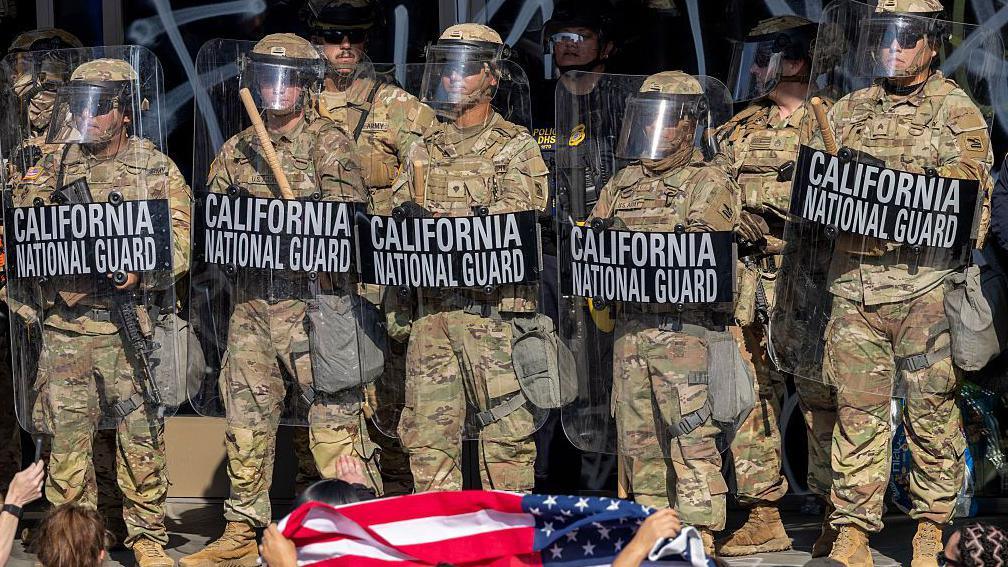'I sleep with a gas mask on': Life next to Portland protest angering Trump
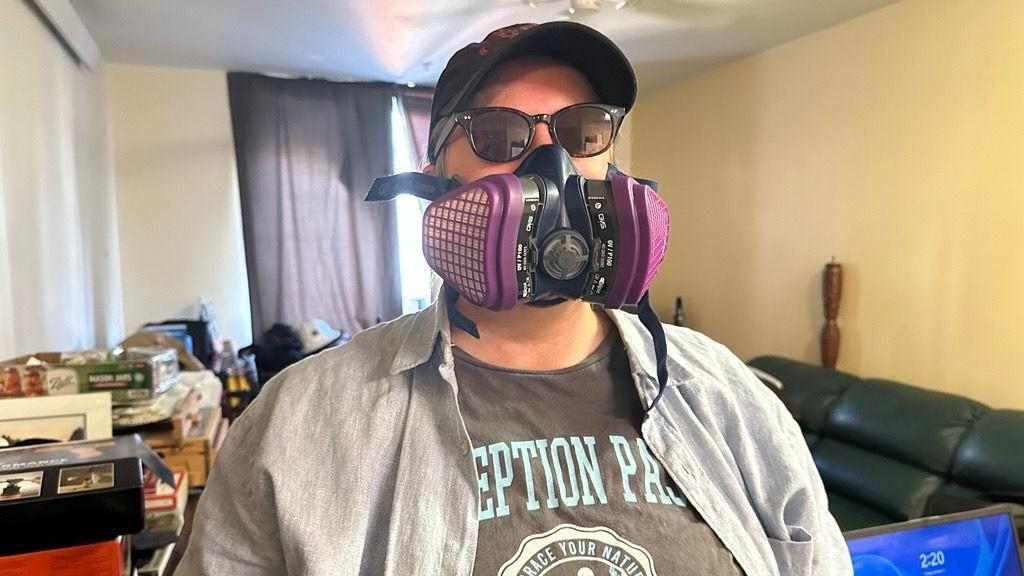
- Published
The sound of a protest outside her window wakes Brennah Hammar in the middle of the night.
Tear-gas creeps into her apartment complex, Gray's Landing, which is located across from an Immigration and Customs Enforcement (ICE) building in Portland's South Waterfront neighbourhood.
For months, the area has become the site of nightly clashes between federal agents and protesters, dressed in black, who are opposed to immigration arrests.
"It's like a war zone," Ms Hammar, 57, says about her street. Several other residents spoke to BBC News about the unrest, which is centred on just one city block, as tensions have boiled over and put the city in the national spotlight.
"There are times I've had to have a gas mask on inside my own home," she says, demonstrating how she now wears her mask to sleep.
President Donald Trump says he wants to send in the National Guard to protect the officers and federal buildings, making Portland the latest test case in Trump's plan to deploy troops to places - mostly Democratic-run cities - that he says are plagued by crime.
"Portland is burning to the ground" and is plagued by "insurrectionists all over the place", he says.
Watch: Federal officers and protesters face off outside Portland ICE facility
But a federal judge has disagreed and temporarily halted Trump's plans for Portland, saying it appeared that the president had "exceeded his constitutional authority".
Trump's comments have also been widely mocked as hyperbole by the city's 635,000 residents.
But for those living in this apartment complex, there is a daily battle on their doorstep, although they disagree over who is to blame for the violence.
Some building residents blame Antifa. Short for anti-fascist, Antifa is a decentralised, leftist movement that opposes far-right causes and has been designated a domestic terrorist group by Trump.
Gray's Landing neighbours who are sympathetic to the more extreme protesters have been allowing them to enter the building, leading to confrontations in hallways, residents say.
And some, who have gone outside at night, have been attacked or threatened, according to footage Ms Hammar filmed and showed to BBC News. Her footage showed gunshots being fired, and a resident being punched in the face by a protester.
Mayor Keith Wilson blames federal agents for inciting the crowd.
Wilson has called for an investigation into actions taken by ICE agents, including the use of pepper spray and impact munitions.
"This is an aggressive approach trying to inflame the situation that has otherwise been peaceful," Wilson said on Sunday after another night of tear gas and violent arrests.
Whoever is to blame, the violence has already changed the community.
The Cottonwood School, located next door to the ICE building, relocated in August after "munitions" kept being found in the playground, according to school officials.
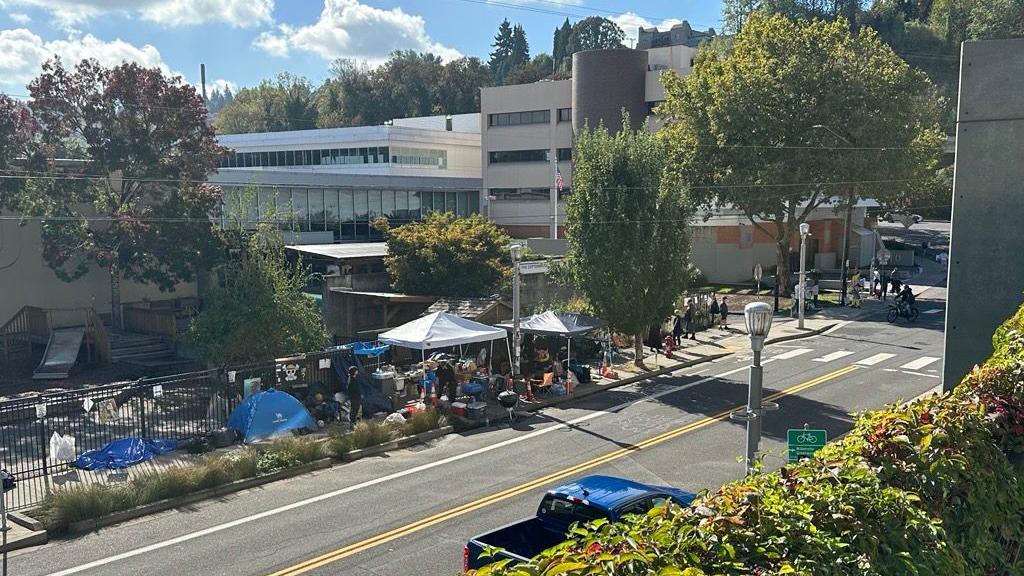
The view of the ICE centre (right), with the abandoned middle school (left) - as seen from the upper courtyard of Gray's Landing
During the BBC's daytime visit, one resident was seen carrying his two pet rats and screaming insults at ICE agents posted outside the federal building.
"Get back in your pen, pig!" yelled the man, as flannel-wearing bike commuters stopped by to observe the scene.
A small gathering of protesters milled outside the building, with no city officers in sight. A man dressed as a chicken, who has been present outside the facility for the last several weeks, waved to cars.
Gray's Landing resident Cindy Colgrove, 63, says it has been "115 days of hell" since protests against Trump intensified outside the ICE facility in June.
"I only come out during the day," says Ms Colgrove while walking her neighbour's dog near a small group of peaceful protesters.
"You see all the black-covered Antifa people aren't here. They come with the night. In the daytime it's all these little old senior people that think they're changing the world before they pass from this earth."
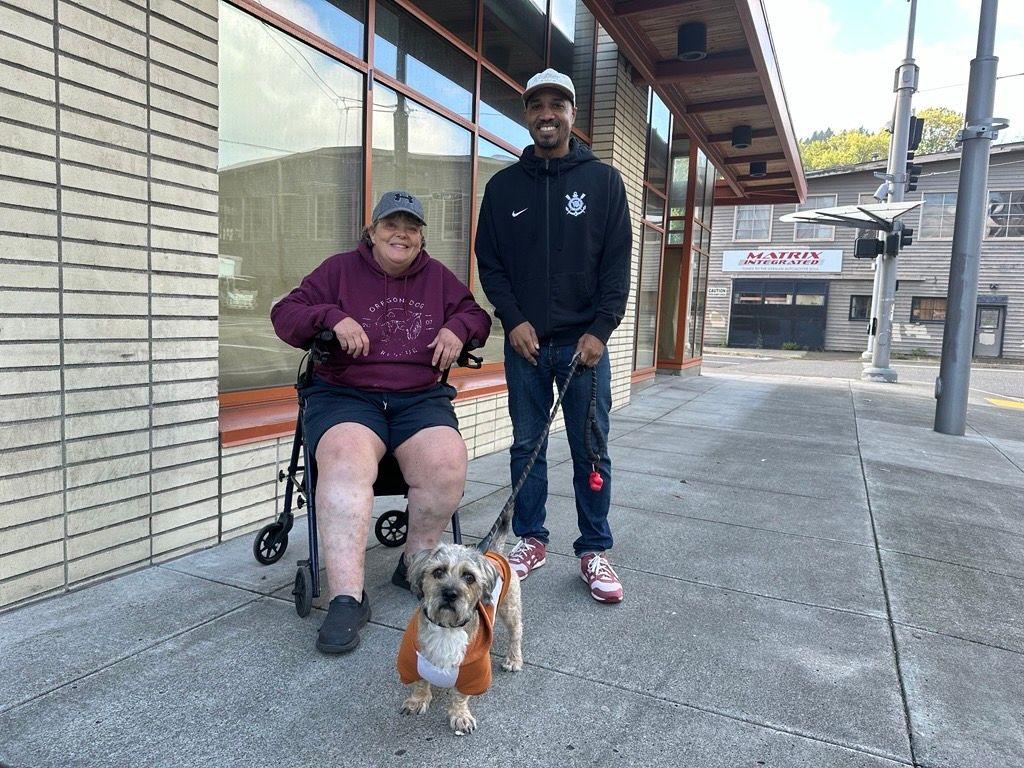
Cindy Colgrove and Mai Tai Boyd (right) know eachother through dog walking, and disagree on Trump's moves to deploy the National Guard
Ms Colgrove, who says she has been attacked on the street while speaking in support of the police, digs through the basket of her walker to show the weapons she now carries – a can of bear mace and a stun gun.
Fellow dog owner Mai Tai Boyd, 44, tells Ms Colgrove that he disagrees that their building has been "abandoned" by local city officials.
"I keep up with the politics. So I feel a little different," says Mr Boyd, who has lived in the building for 13 years.
The US Air Force veteran says Trump's plan to send in the troops is a blatant violation of the US constitution.
"I don't understand why law enforcement can't handle it. Like why do you need to send the troops - combat trained and ready?"
In other parts of the famously liberal "Rose City", life goes on as normal. On Sunday, over 12,000 people participated in the Portland Marathon, jogging past the ICE facility without incident.
The only National Guard presence seen by the BBC was from a recruiter at the finish line, manning a booth and asking runners if they wanted to enlist.
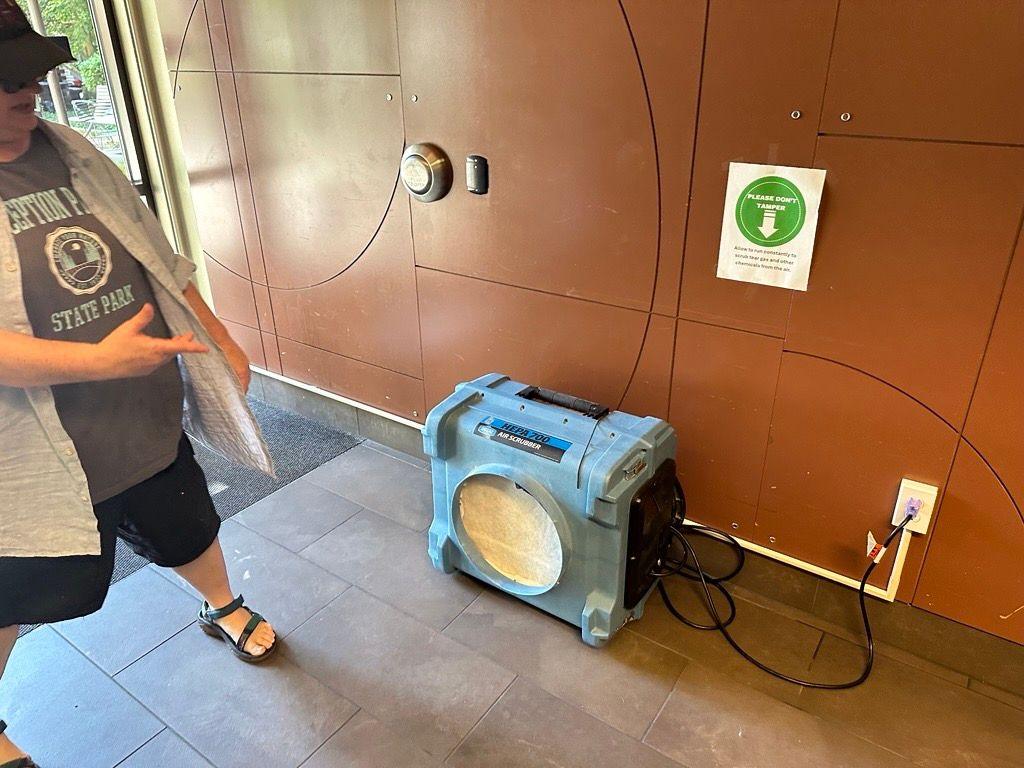
Hammar points out one of the industrial air scrubbers that are noisily humming all over the building
Most Portland residents blame Trump for the unrest. In 2020, in his first term, Trump was also accused of inflaming protests when he sent in National Guard troops to downtown areas as thousands demonstrated against police violence.
In the gentrified Alberta Arts District, residents called Trump's claims about Portland laughable, and praised the city for its culture and friendly vibes.
One grocery worker noted that the city has a long history of being villainised by Republicans like Trump, including by George HW Bush who reportedly referred to Portland as "Little Beirut".
Nick, who only wanted to be identified by his first name, said he is disgusted by immigration arrests that have taken place in the city by masked federal agents.
"Portland has a right to defend itself and its neighbours," he said.
Back in Gray's Landing there's a clean-up operation as industrial air scrubbers are placed throughout the complex. Residents say the noxious riot control gases released by federal agents travels through the building's ventilation.
"When it comes to the corridor, it funnels right through," says Ms Hammar, who has gone to the hospital twice because of the way the gas "feels like its squeezing your heart".
The Hepa 700 machines roar noisily, and are accompanied by signs explaining how they "scrub tear gas and other chemicals from the air".
There are also white sticky pads placed like door mats at each entrance. They are meant to collect the powdered tear gas chemicals, to keep the irritants from being tracked into the building on the soles of their shoes like dust.
Ms Hammar, a Portland native, says she disagrees with every single one of President Donald Trump's policies, including his approach to immigration enforcement. But she believes strongly in Trump's plan to send in the National Guard to Portland, to support federal agents.
"That is one thing I support, as far as Trump is concerned," she says, bracing for another night of sirens and gas.
"Because the city is failing us, and I don't want to feel like I'm collateral damage. And my rights matter, too."
Related topics
- Published6 October
